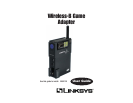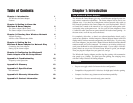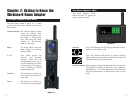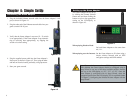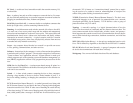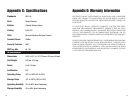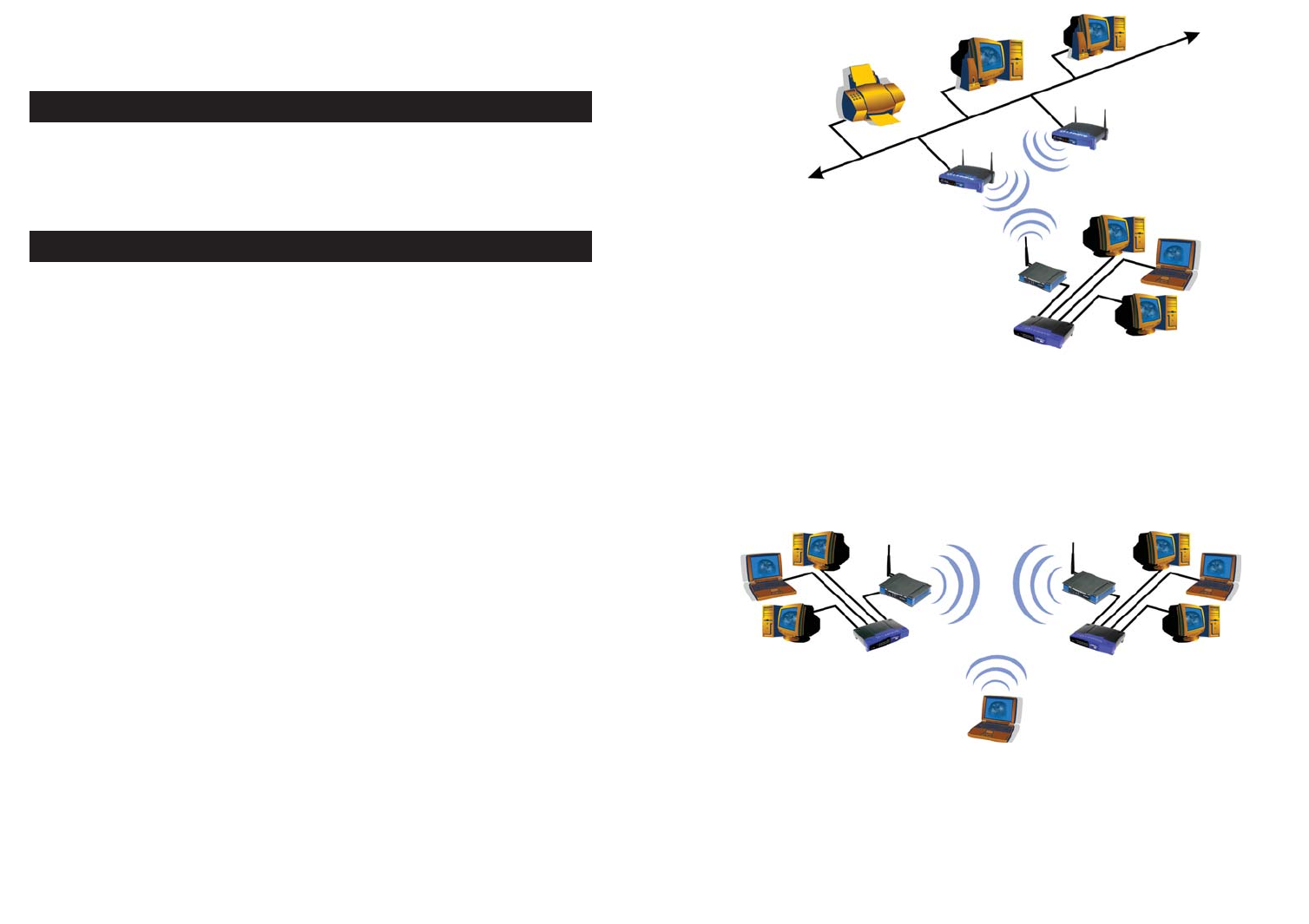
54
Figure 3-2 shows a wireless bridging scenario using two Wireless-B Game
Adapters. Each wireless network is connected to a Wireless-B Game Adapter
through a switch. A separate computer is equipped with a wireless PC card and
can communicate with both wireless networks as long as it has the same SSID
and channel as both wireless networks.
Chapter 3: Planning Your Wireless
Network
A wireless local area network (WLAN) is exactly like a regular local area net-
work (LAN), except that each computer in the WLAN uses a wireless device to
connect to the network. Computers in a WLAN share the same frequency chan-
nel and SSID, which is an identification name for wireless devices.
Unlike wired networks, wireless networks have two different modes in which
they may be set up: infrastructure and ad-hoc. An infrastructure configuration
is a WLAN and wired LAN communicating to each other through an access
point. An ad-hoc configuration is wireless-equipped computers communicating
directly with each other. Choosing between these two modes depends on
whether or not the wireless network needs to share data or peripherals with a
wired network or not.
If the computers on the wireless network need to be accessible by a wired net-
work or need to share a peripheral, such as a printer, with the wired network
computers, the wireless network should be set up in Infrastructure mode. The
basis of Infrastructure mode centers around an access point, which serves as the
main point of communications in a wireless network (see Figure 3-1). Access
points transmit data to PCs equipped with wireless network cards, which can
roam within a certain radial range of the access point. Multiple access points
can be arranged to work in succession to extend the roaming range, and can be
set up to communicate with your Ethernet hardware as well.
If the wireless network is relatively small and needs to share resources only
with the other computers on the wireless network, then the Ad-Hoc mode can
be used. Ad-Hoc mode allows computers equipped with wireless transmitters
and receivers to communicate directly with each other, eliminating the need for
an access point. The drawback of this mode is that in Ad-Hoc mode, wireless-
equipped computers are not able to communicate with computers on a wired
network. And, of course, communication between the wireless-equipped comput-
ers is limited by the distance and interference directly between them.
Network Topology
Ad-Hoc versus Infrastructure Mode
Figure 3-1
Figure 3-2



